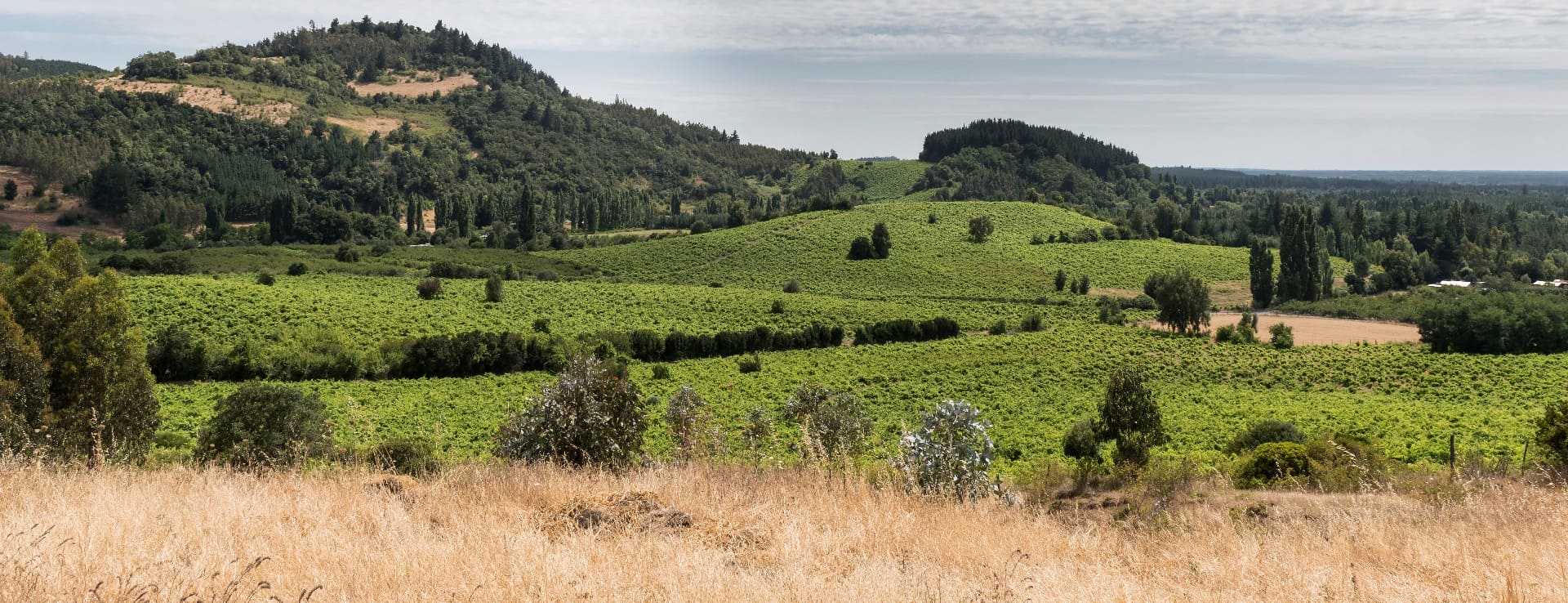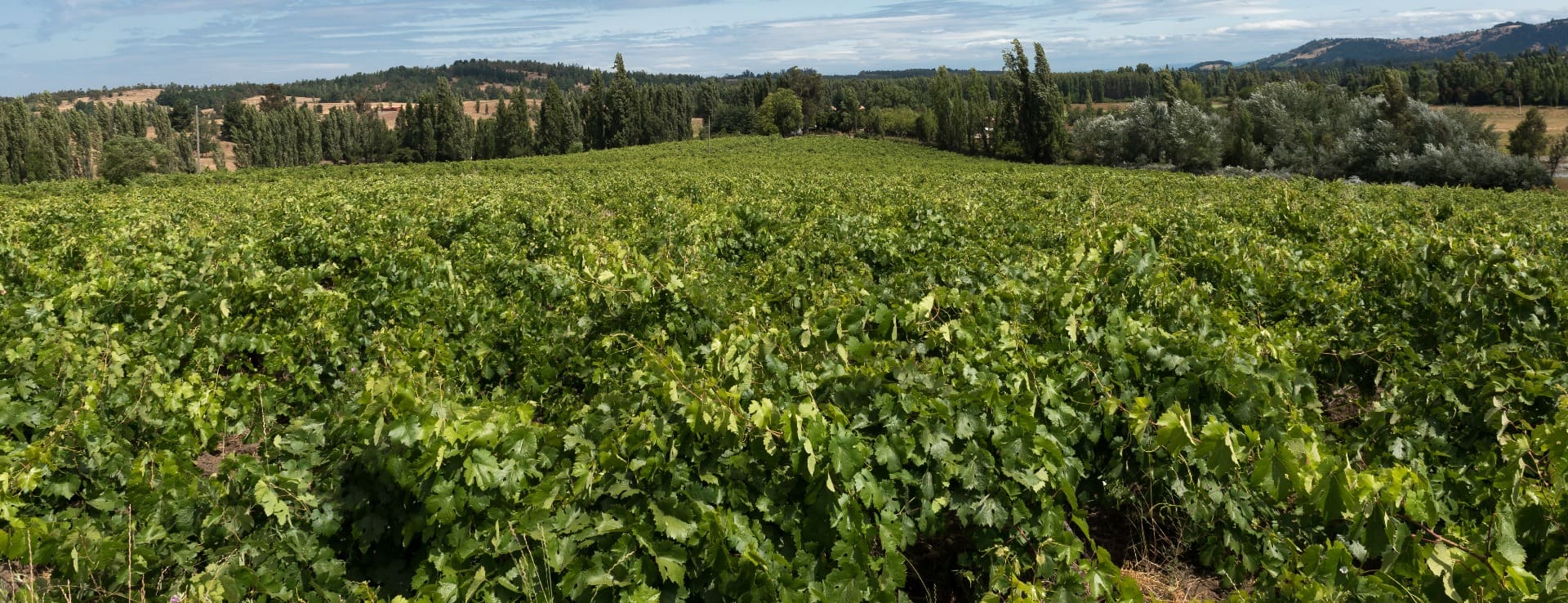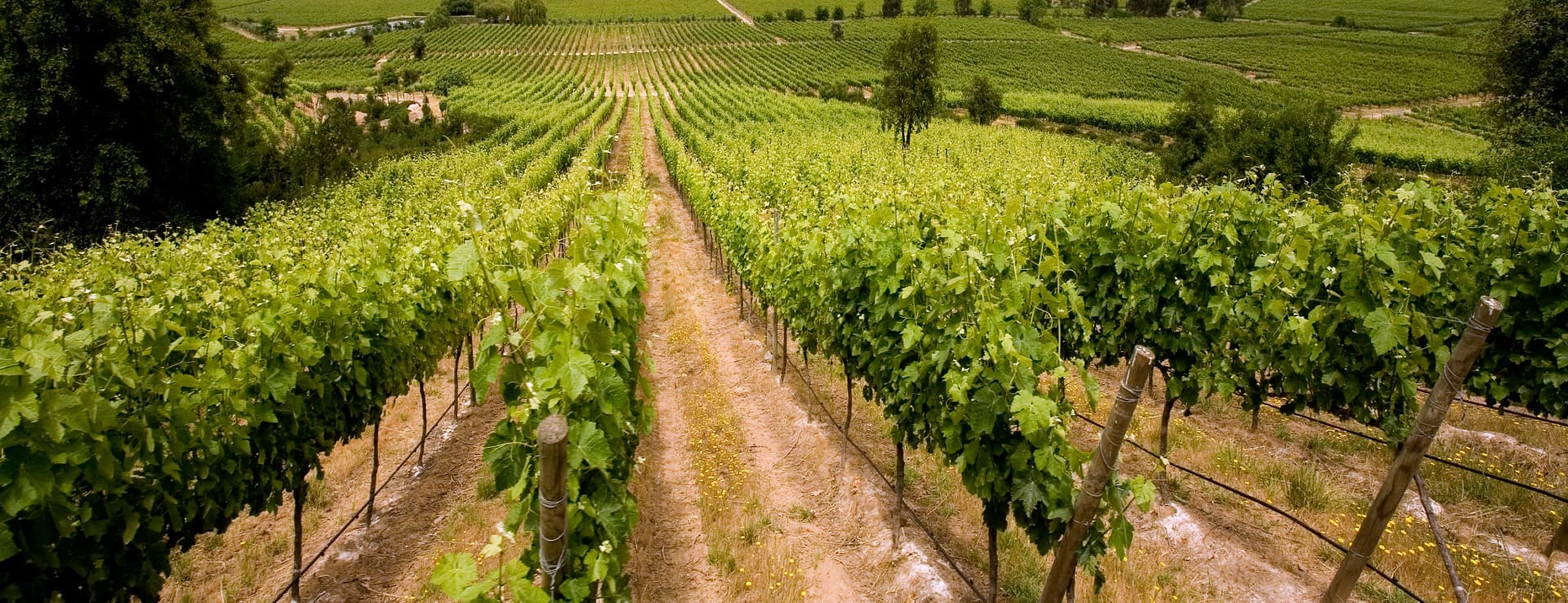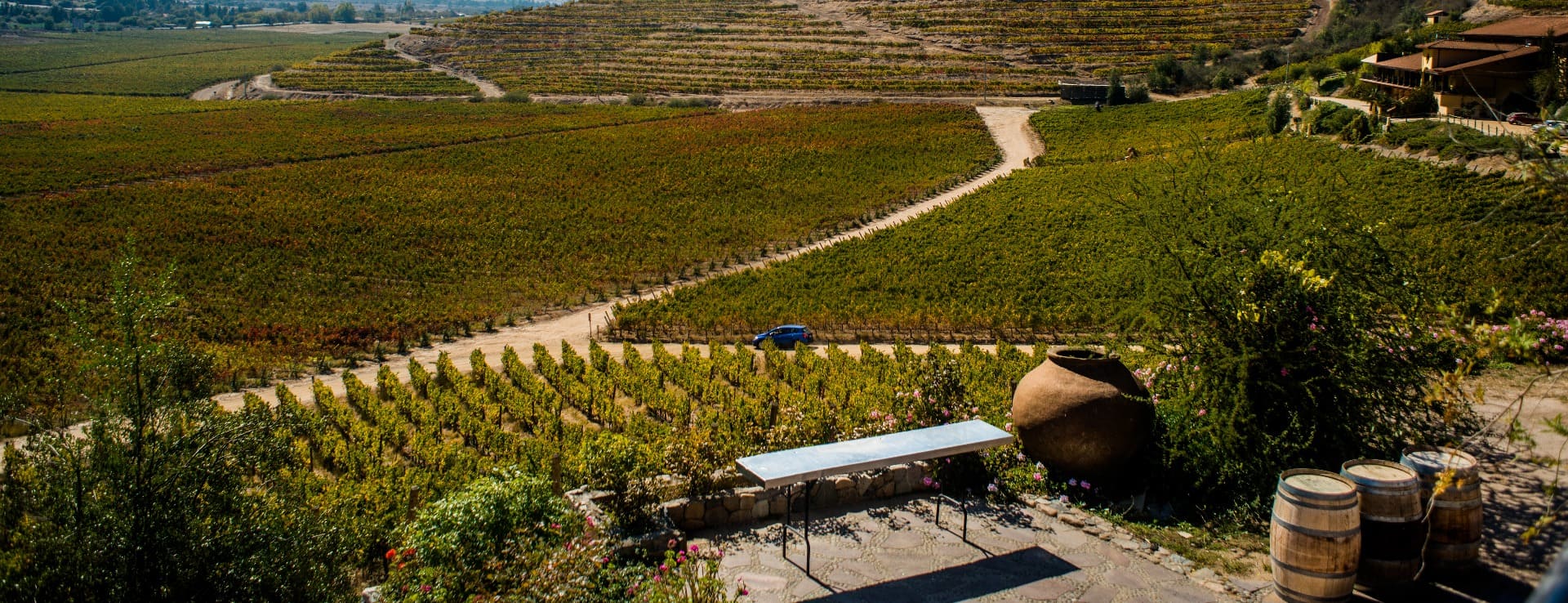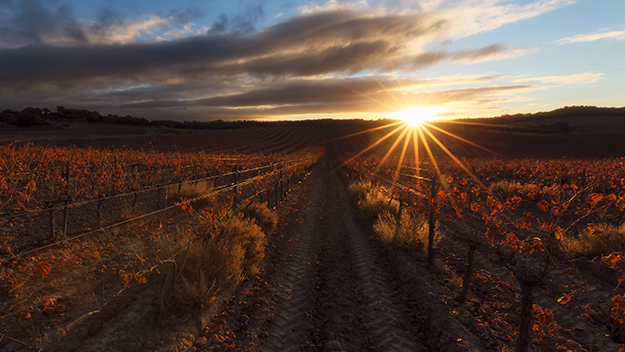Find your winery or vineyard
Infographic of the Denomination of Origin
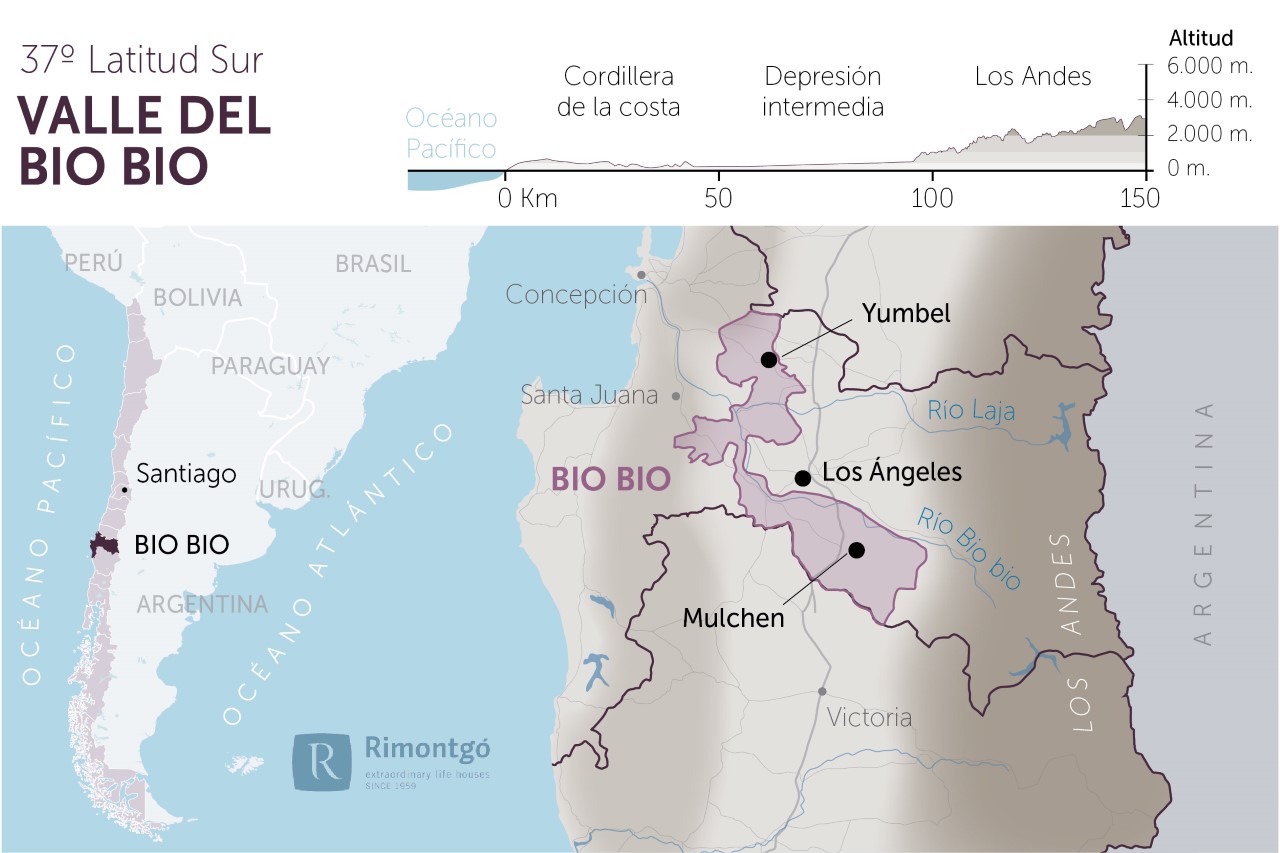
Change to imperial units (ft2, ac, °F)Change to international units (m2, h, °C)
Total surface area:
2.200 ha5.436 ac
Altitude of the vineyards:
Min: 100m
Max: 400m
Min: 328ft
Max: 1.312ft
Temperature:
Min: 6º
Max: 23º
Min: 43°F
Max: 73°F
Yearly rainfall:
1.276 l/m2119 l/ft2
Designation of Origin Valle del Biobío
LOCATION AND HISTORY
Along the history of Chile’s wine culture, the Biobío Valley, included in the province and region of the same name, was considered as one of the border territories due to its weather and geographic conditions for the vine cultivation. In recent decades, this philosophy around wine activity has changed, as nowadays there are vines in even more southern territories such as the Cautín and Osorno valleys. Also historically, it has been a designation of origin characterised by the work with rustic vines used mainly for the production of table wine, together with Muscat grape production in bulk and for export. In recent years, some of the wineries in the Biobío valley have focused on the production of superior quality wines, especially, on the efficiency of the Pinot Noir variety and, to a lesser extent, Chardonnay and Sauvignon Blanc. The short-cycle red varieties are favoured by the cold and humid climates; therefore, Pinot Noir has become in a highly appreciated variety in Biobío.
SOILS
The soils in the designation of origin Valle del Biobío are sandy and stony in nature with river deposits. Other important factors are the granite from the Coastal Range, alluvial deposits or the presence of slate in the land closest to the coast, which makes possible a commitment to high quality wines.
The winemaking activity takes place mainly in the semi-humid and humid area, basically on four types of soil: red clay, brown clay, ñadis and trumaos. This area includes the Bíobío and Malleco valleys, where the presence of volcanic deposits often shares space with alluvial conditions, mainly contributed by the area's rivers such as the Laja, Mulchén and Bíobío.
The volcanic soils in Chile are quite young and from Curicó towards the south they start to be noticeable on the surface with ashes and volcanic sands and pumice. To the south of the Bíobío River the Central Valley takes the form of an undulating plain, with gentle hills over 400 meters high, and several wineries have set their eyes on it to see what this place can give.
There is still much to understand about volcanic soils, such as the role of silica and the porosity of the ashes and what happens to the diversity of minerals. This added to the interaction of a cold and humid climate will define what the area will be like in the future.
Following the coast line towards the South, today new projects are generated, which maintain similar characteristics: the Coastal Range and its granitic rocks are always present, together with river mouths that contribute the alluvial. In many sectors of the Ñuble and Bíobío regions near the coast, they present the so-called metamorphic rock called slate that, given its characteristics, allows the development of qualitatively superior vines and wines. It is important the appearance of some unique projects in relation to the soil where they are located.
CLIMATE
The climate in the designation of origin Biobío is colder than in the neighbouring designations, especially around the river that gives the valley its name. Wind and rain are also persistent climatic elements in this valley, even during the summer months. These climatic conditions are favourable for vines that need a long period of maturation. The cold weather conditions, from the Biobío to the south, a very good adaptation of varieties such as Chardonnay, Pinot Noir, Sauvignon Blanc and Riesling, which give promising results due to their freshness and acidity.
The cold coastal valleys are defined by their proximity to the sea. The Pacific Ocean or the increase in southern latitude are the two variables that generate lower temperatures, especially in the summer months and annual rainfall can reach 1,100 mm per year.
TYPE OF GRAPE
The designation of origin Valle del Biobío has a singular microclimate that makes possible suitable conditions for the cultivation of white grape varieties, as well as red grape varieties suitable for cold climates. In the past, winemaking activity was concentrated around Chile's own varieties and late-ripening vines, which in recent decades have been replaced by Pinot Noir, Chardonnay and Sauvignon Blanc. The cold climate is a limit for long-cycle varieties such as Cabernet Sauvignon or Malbec. Next to them we find other varieties such as Cinsaut or Muscat of Alexandria.
Discover more wineries and vineyards for sale in these wine regions in Chile
Subscribe to our mailing list to receive news about wineries and vineyards.

